BESLER, Basilius (1561-1629). Hortus Eystettensis . [Nuremberg: 1613].
BESLER, Basilius (1561-1629). Hortus Eystettensis . [Nuremberg: 1613]. Royal broadsheet (554 x 412mm). Collation of preliminary and letterpress leaves: \Kp\k engraved title [early state before date and with 'hoc tempore'], )( letterpress dedication to Johann Christoph von Westerstetten, Bishop of Eichstätt, \Kc\k1r privilege for France, verso blank, 2\Kc\k privileges for Belgium and the Netherlands, 3\Kc\kr verses to Besler with his engraved portrait and arms, verso blank; 18 (of 19) leaves of index in Latin and German distributed at the end of each seasonal part (7; 8; 3; without one-leaf index to final part); 'Ordo' titles printed on plate versos; without descriptive text as issued. Engraved title by Wolfgang Kilian and 367 engraved plates by Wolfgang Kilian Dominicus Custos Raphael Custos Georg Gärtner Johann Leypold, Levin van Hulsen, Friedrick van Hulsen, Peter Isselburg Servatius Raeven, Heinrich Ulrich and possibly others, after Daniel Herzog, Georg Gärtner and others. Paper: all sheets watermarked with pine-cone on cup within armorial shield [similar to Briquet 2122 = ?arms of Augsburg], except the engraved title and Besler portrait sheet, which are unmarked. (Without 4 engraved season titles and one letterpress index leaf, title mounted and with small repairs just into plate edges, a few other leaves on guard, light stain on one plate, small marginal spot on one plate, tiny wormtrack in about 8 leaves, small paper flaw in plate on about 4 leaves, tear just into plate from removal of index tab on 4 leaves.) Contemporary German blindtooled pigskin over pastepaper boards, concentric panels of roll tools, and ornaments, armorial stamp, initials E S A C and date 1669 added just later in gilt, evidence of ties at three edges, original endpapers at end with pine-cone watermark as rest of the book, index tabs (coat-of-arms deleted, lightly worn, modern front endpapers and red edges); modern linen slipcase. Provenance : E.S.A.C., 1669 (binding) -- ?Tiexal Fuhr (title inscription from the second half of 17th century). FIRST EDITION, DE LUXE ISSUE, UNCOLOURED, OF THE MOST RENOWNED FLORILEGIUM EVER PUBLISHED. The Hortus Eystettensis is a pictorial record of the flowers grown in the greatest German garden of its time, that of the Prince Bishop of Eichstätt, Johann Conrad von Gemmingen. At the Willibaldsburg castle, his seat above the river Altmühl, the Prince Bishop had constructed eight separate gardens, each with its own gardeners and each filled with flowers from a different country; in tulips alone he boasted of 500 colours. The great German botanist, Joachim Camerarius the Younger, served the Prince Bishop as advisor on the garden's early design and on his death in 1598 a Nuremberg apothecary, Basilius Besler took on the role. It was Besler who had the garden immortalised in detailed and delicate engravings for the year-round enjoyment of his patron and for posterity in the Hortus Eystettensis . The book was conceived on a grand scale. Flowers were drawn from life and flower boxes were sent to Nuremberg so that artists there could work from fresh specimens; copperplate engravings were made by the most skilled engravers such as Wolfgang Kilian; and the plates were printed on large-format, royal paper sheets. The first edition of 300 copies was publised in two issues: one with descriptive text printed on the versos of the engraved plates intended to be sold via regular trade channels, and another without the text; in a few copies of the latter issue the text was printed on separate sheets and interleaved with the plates. As Barker observes, the issue without text was undoubtedly intended to be coloured by hand, and the versos was left blank to ensure that no shadow of the printed text could detract from the beauty of the pure botanical image. Just as Johann Conrad was among the earliest in Germany to construct gardens for pleasure, as opposed to utility, so too did he provide a pictorial record of his flowers for pure
BESLER, Basilius (1561-1629). Hortus Eystettensis . [Nuremberg: 1613].
BESLER, Basilius (1561-1629). Hortus Eystettensis . [Nuremberg: 1613]. Royal broadsheet (554 x 412mm). Collation of preliminary and letterpress leaves: \Kp\k engraved title [early state before date and with 'hoc tempore'], )( letterpress dedication to Johann Christoph von Westerstetten, Bishop of Eichstätt, \Kc\k1r privilege for France, verso blank, 2\Kc\k privileges for Belgium and the Netherlands, 3\Kc\kr verses to Besler with his engraved portrait and arms, verso blank; 18 (of 19) leaves of index in Latin and German distributed at the end of each seasonal part (7; 8; 3; without one-leaf index to final part); 'Ordo' titles printed on plate versos; without descriptive text as issued. Engraved title by Wolfgang Kilian and 367 engraved plates by Wolfgang Kilian Dominicus Custos Raphael Custos Georg Gärtner Johann Leypold, Levin van Hulsen, Friedrick van Hulsen, Peter Isselburg Servatius Raeven, Heinrich Ulrich and possibly others, after Daniel Herzog, Georg Gärtner and others. Paper: all sheets watermarked with pine-cone on cup within armorial shield [similar to Briquet 2122 = ?arms of Augsburg], except the engraved title and Besler portrait sheet, which are unmarked. (Without 4 engraved season titles and one letterpress index leaf, title mounted and with small repairs just into plate edges, a few other leaves on guard, light stain on one plate, small marginal spot on one plate, tiny wormtrack in about 8 leaves, small paper flaw in plate on about 4 leaves, tear just into plate from removal of index tab on 4 leaves.) Contemporary German blindtooled pigskin over pastepaper boards, concentric panels of roll tools, and ornaments, armorial stamp, initials E S A C and date 1669 added just later in gilt, evidence of ties at three edges, original endpapers at end with pine-cone watermark as rest of the book, index tabs (coat-of-arms deleted, lightly worn, modern front endpapers and red edges); modern linen slipcase. Provenance : E.S.A.C., 1669 (binding) -- ?Tiexal Fuhr (title inscription from the second half of 17th century). FIRST EDITION, DE LUXE ISSUE, UNCOLOURED, OF THE MOST RENOWNED FLORILEGIUM EVER PUBLISHED. The Hortus Eystettensis is a pictorial record of the flowers grown in the greatest German garden of its time, that of the Prince Bishop of Eichstätt, Johann Conrad von Gemmingen. At the Willibaldsburg castle, his seat above the river Altmühl, the Prince Bishop had constructed eight separate gardens, each with its own gardeners and each filled with flowers from a different country; in tulips alone he boasted of 500 colours. The great German botanist, Joachim Camerarius the Younger, served the Prince Bishop as advisor on the garden's early design and on his death in 1598 a Nuremberg apothecary, Basilius Besler took on the role. It was Besler who had the garden immortalised in detailed and delicate engravings for the year-round enjoyment of his patron and for posterity in the Hortus Eystettensis . The book was conceived on a grand scale. Flowers were drawn from life and flower boxes were sent to Nuremberg so that artists there could work from fresh specimens; copperplate engravings were made by the most skilled engravers such as Wolfgang Kilian; and the plates were printed on large-format, royal paper sheets. The first edition of 300 copies was publised in two issues: one with descriptive text printed on the versos of the engraved plates intended to be sold via regular trade channels, and another without the text; in a few copies of the latter issue the text was printed on separate sheets and interleaved with the plates. As Barker observes, the issue without text was undoubtedly intended to be coloured by hand, and the versos was left blank to ensure that no shadow of the printed text could detract from the beauty of the pure botanical image. Just as Johann Conrad was among the earliest in Germany to construct gardens for pleasure, as opposed to utility, so too did he provide a pictorial record of his flowers for pure
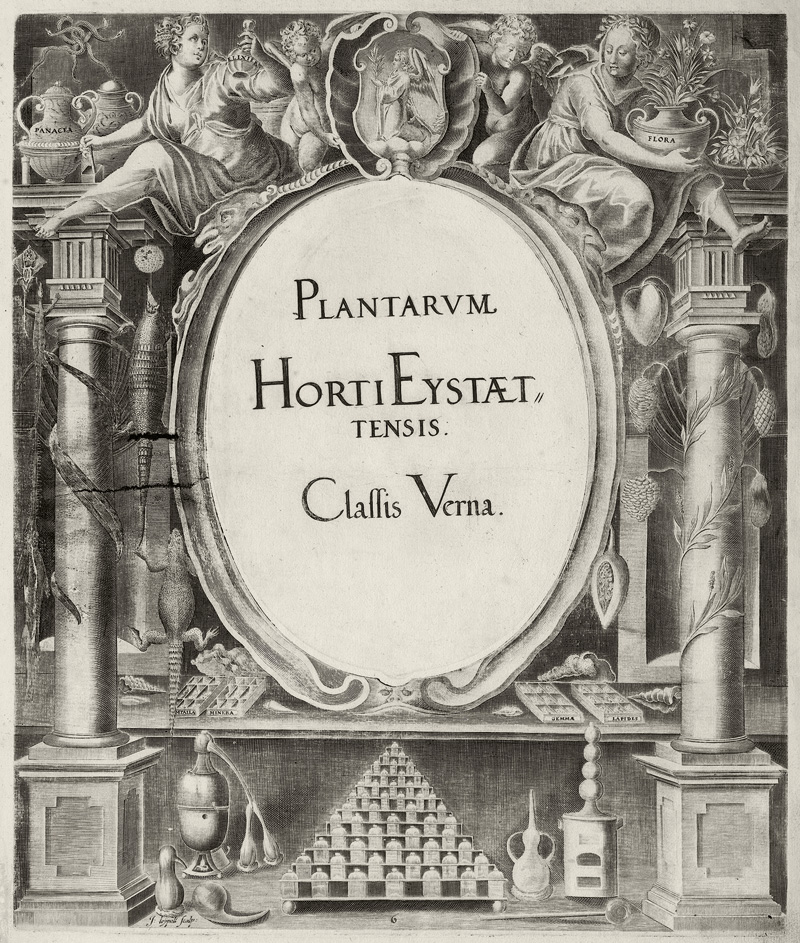

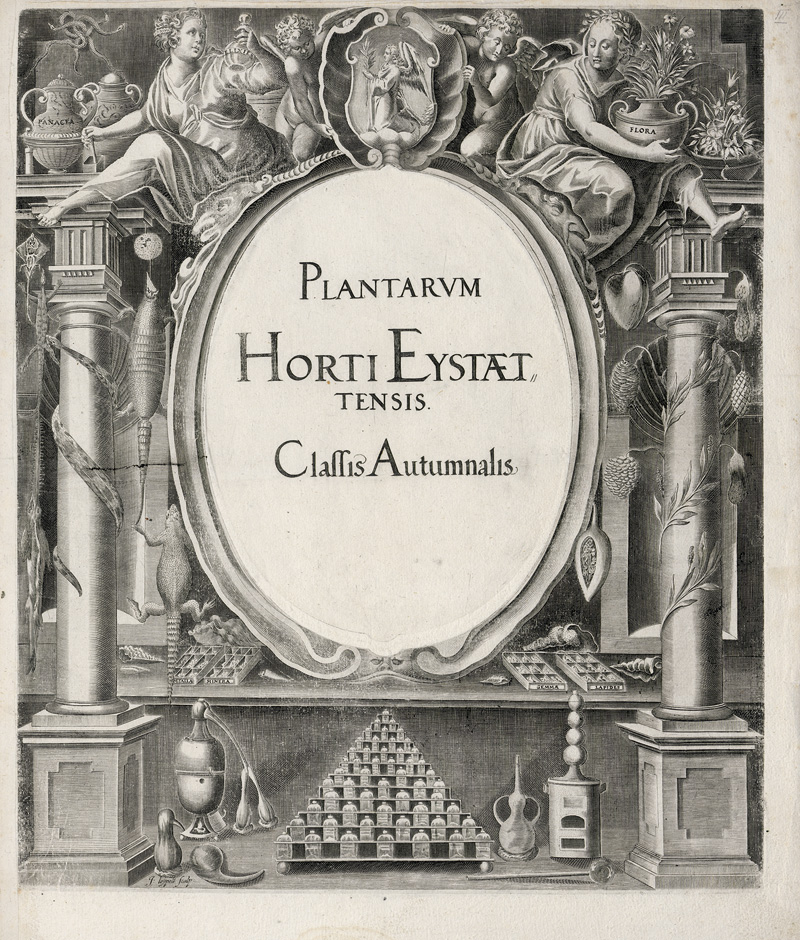
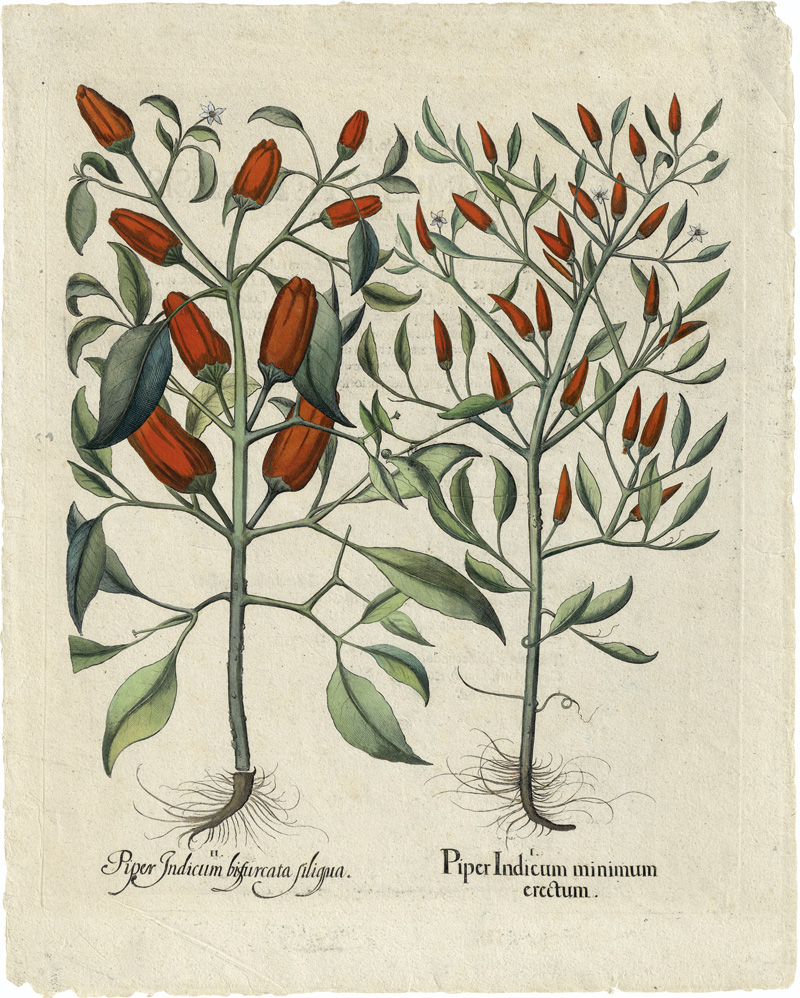
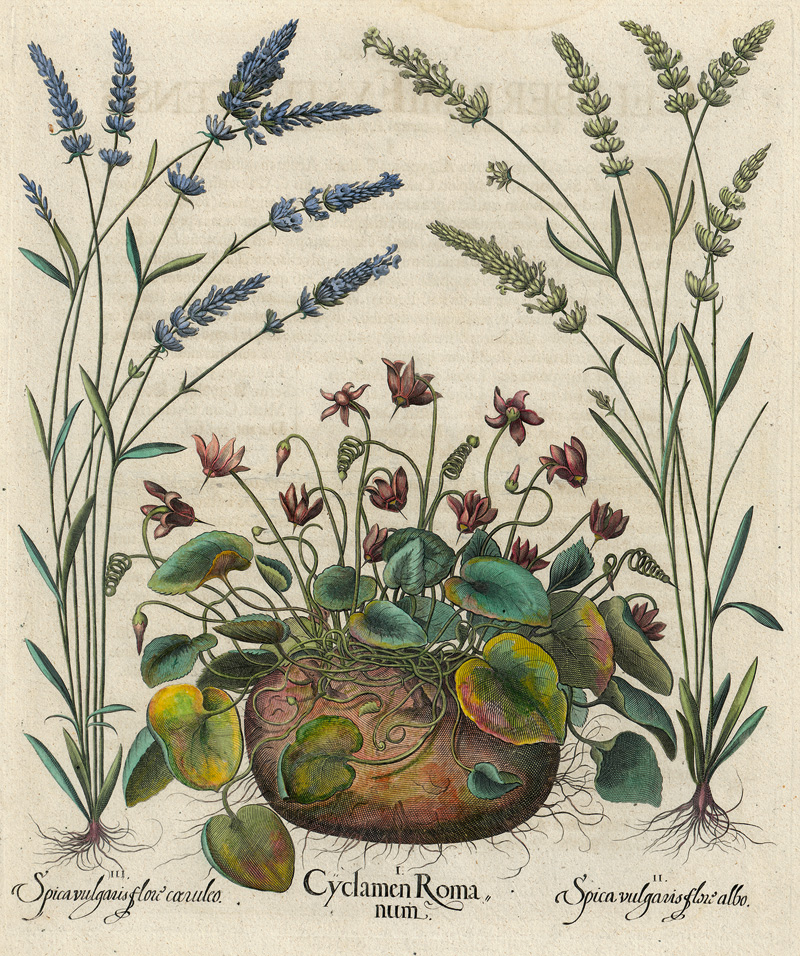
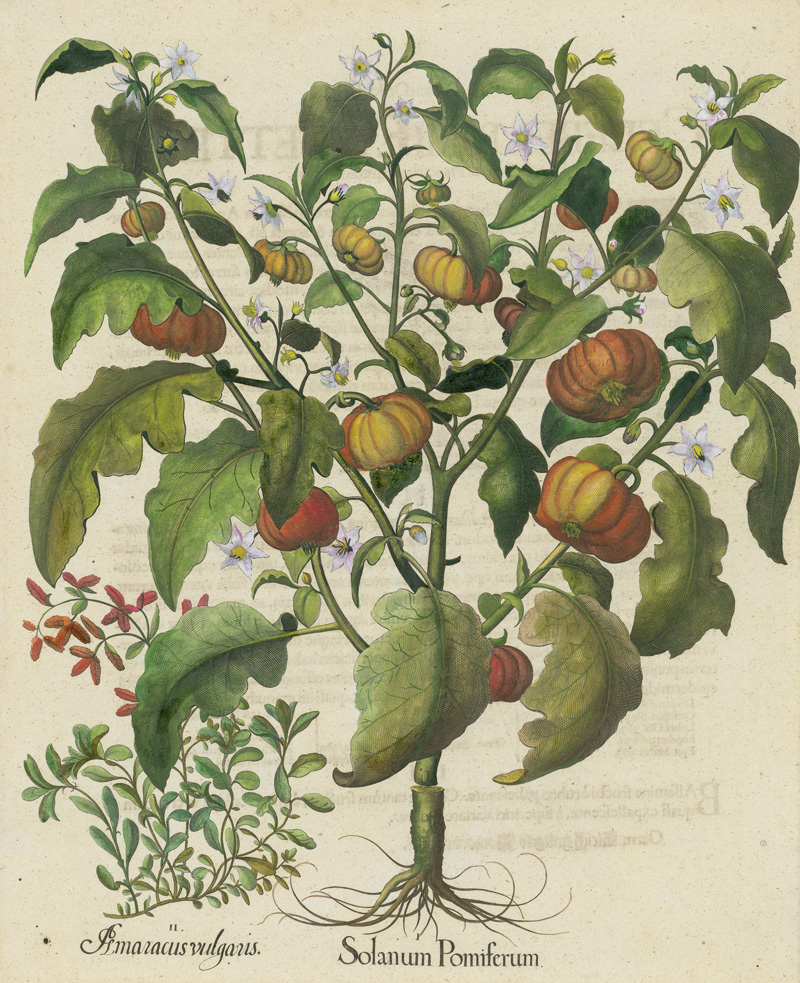
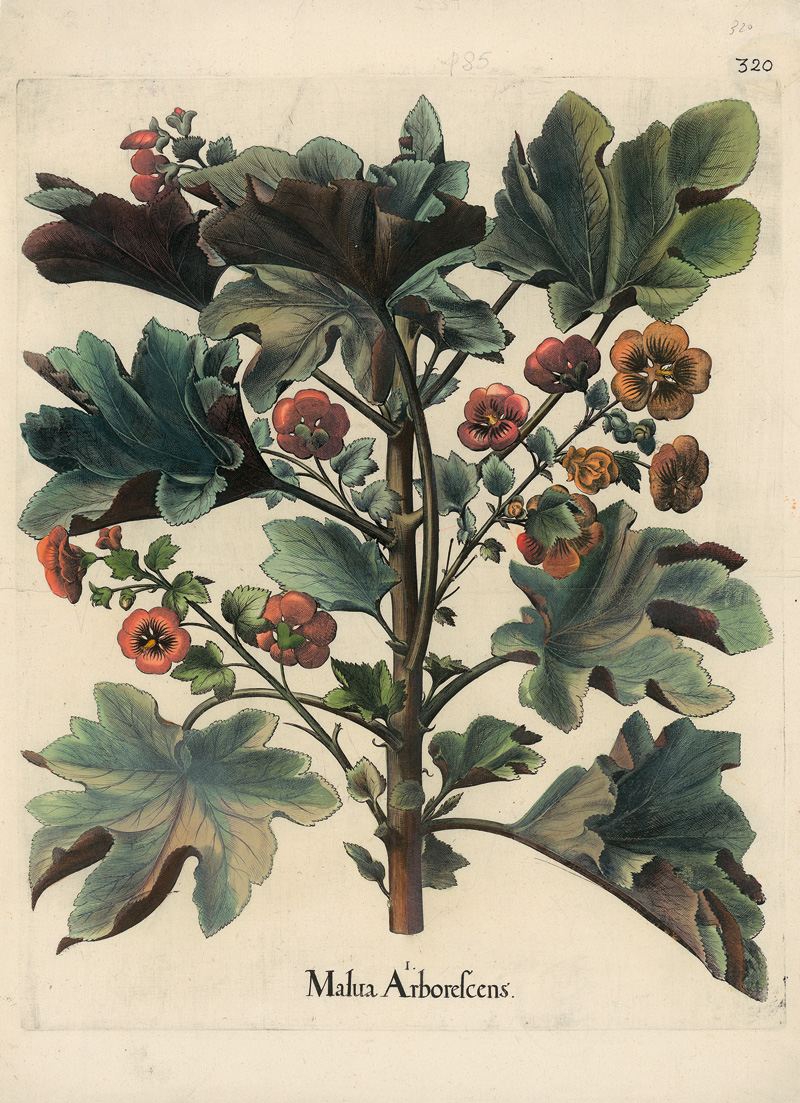


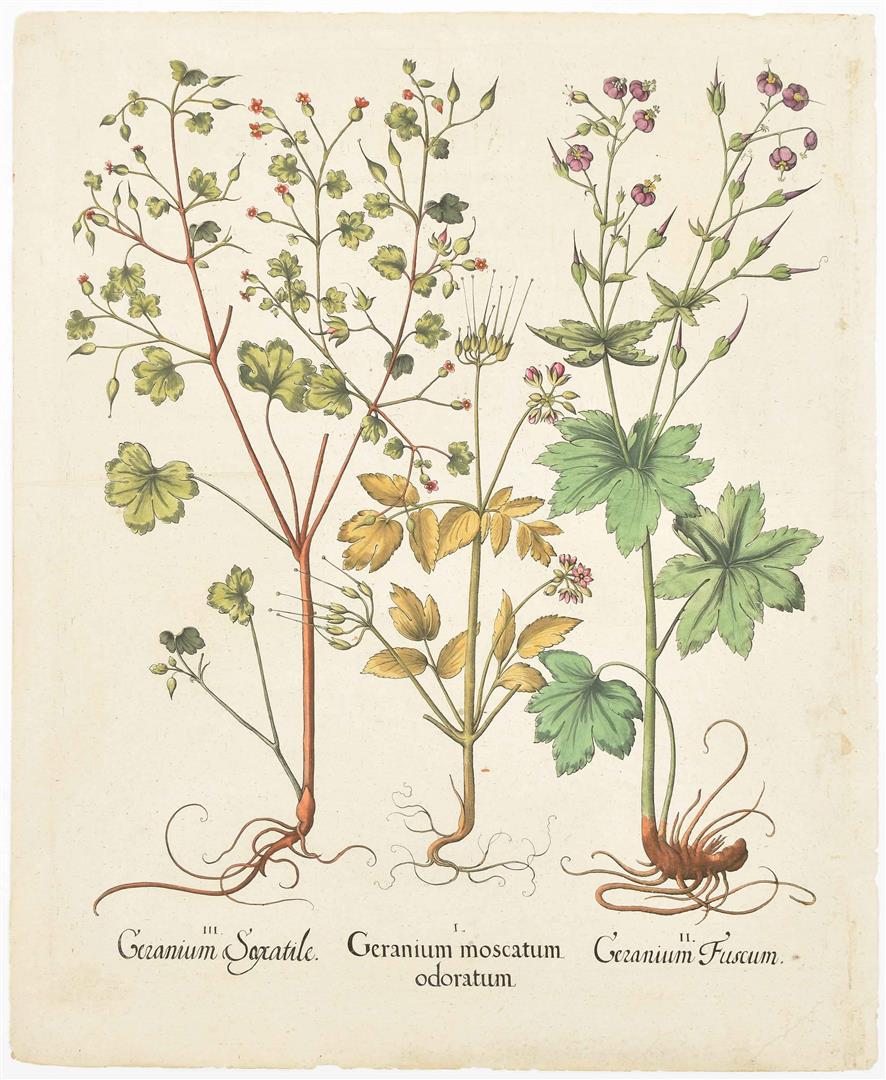




Testen Sie LotSearch und seine Premium-Features 7 Tage - ohne Kosten!
Lassen Sie sich automatisch über neue Objekte in kommenden Auktionen benachrichtigen.
Suchauftrag anlegen